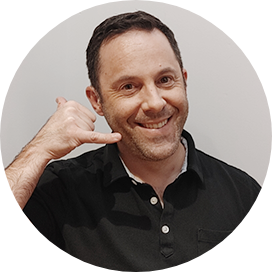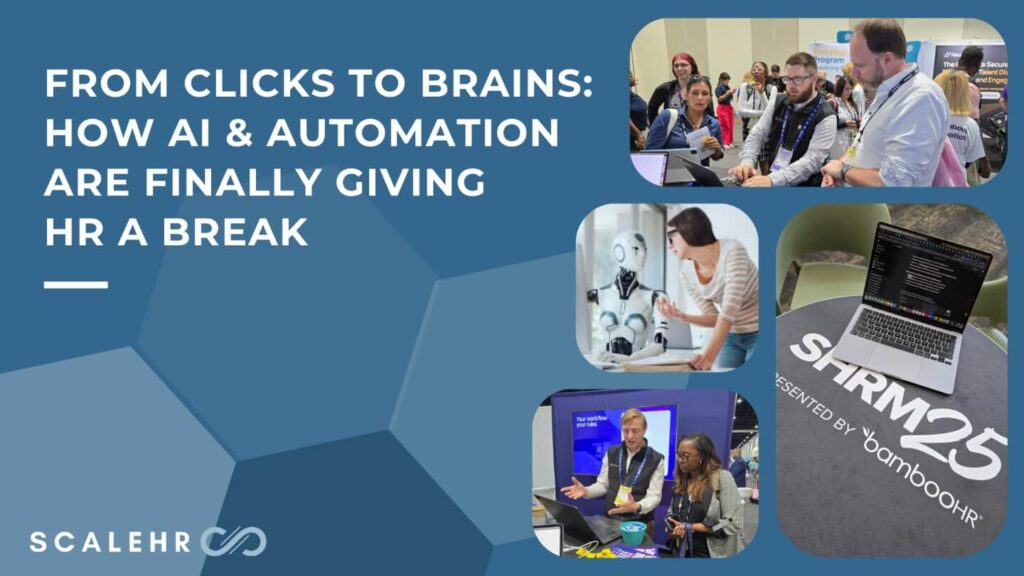For years, HR automation meant setting up email triggers, scheduling reminders, or routing forms between systems. It was largely about task automation, getting repetitive work off HR’s plate. But in 2025, that definition is changing fast. What we’re witnessing now is a full-scale redesign of how HR work gets done, powered by smarter systems that blend automation with AI.
This isn’t just a technology upgrade. It’s a fundamental shift in how HR operates.
Note: this blog post follows up on a recent Unmuted Podcast episode with Kristjan Kristjansson, Co-Founder & CEO, at 50skills. View the episode below.
The Old vs. The New: From Task Automation to Intelligent Workflow Orchestration
Traditional HR automation focused on linear, rule-based processes:
- “When X happens, trigger Y.”
- Examples include offer letter generation, interview scheduling, or sending reminders for document signing.
Today’s systems, by contrast, are context-aware, decision-supportive, and adaptive. They don’t just move data from A to B; they interpret inputs, make choices, suggest next actions, and even predict bottlenecks before they occur.
For example:
An onboarding workflow no longer just sends paperwork and calendar invites. It can now automatically adjust tasks based on employee location, role, or department, suggest relevant learning modules, and flag missing steps before Day 1.
Why This Shift is Happening Now
Several forces are converging:
- HR teams are being asked to do more with fewer resources.
- The HR tech stack is sprawling. Average organizations now juggle dozens of tools that don’t always talk to each other.
- AI capabilities have matured. We’re moving from chatbots and text classification to AI systems that can intelligently route, summarize, analyze, and make recommendations in real-time.
Put simply: The pressure to drive efficiency, personalization, and speed, all at once, is making smarter systems a business necessity, not a nice-to-have.
Where Automation + AI Are Making the Biggest Impact Across the HR Lifecycle
Here are several use cases that we’re seeing – note: there are MANY more:
- Talent Acquisition
AI-driven screening tools, automated candidate communications, and integrated scheduling tools are reducing time-to-hire and cutting out manual coordination. - Onboarding
Smart workflows now personalize onboarding steps based on role, geography, and other variables. AI helps by surfacing relevant content and flagging incomplete tasks before they escalate. - Learning and Development
AI can recommend personalized learning paths, schedule reminders, and track completion rates, reducing the admin burden on L&D teams. - Employee Changes & Mobility
Whether it’s a promotion, location change, or department transfer, AI + automation can dynamically trigger the right sequence of systems updates, notifications, and documentation steps. - Offboarding
Intelligent offboarding workflows can automatically coordinate hardware returns, revoke system access, and even trigger exit interviews or surveys.
What Makes Automation “Smart”
The key difference is that AI makes automation responsive and proactive, not just reactive.
Here’s what that looks like:
- Predictive Logic: AI can anticipate next steps based on data patterns.
- Natural Language Understanding: Systems can interpret human inputs like emails or forms and decide which workflow to trigger.
- Decision Support: AI tools can highlight exceptions or recommend actions when workflows stall or when data conflicts arise.
Example: Instead of waiting for an HR Coordinator to notice that a new hire hasn’t completed required paperwork, the system can automatically send escalations, offer next-step recommendations, or even predict which hires are at risk of dropping out of the process.
Mindset Shift: HR as Workflow Designers
To take full advantage of this evolution, HR teams need a mindset shift:
- From: Passive users of pre-built tools.
- To: Active designers of end-to-end employee workflows.
This doesn’t mean HR needs to become developers. But it does mean HR professionals need to think in terms of workflows, triggers, conditions, and outcomes, and embrace low-code/no-code platforms that let them design and adjust workflows without IT bottlenecks.
The best HR teams are starting to own their workflows the same way marketing teams own their customer journeys. The era of “hyper-personalization” in HR tech is finally here.
Getting Started: Practical First Steps
For HR teams just starting their smarter systems journey, here’s where to begin:
- Map Your Pain Points: Start by identifying repetitive manual processes that consume your team’s time – onboarding, employee changes, or candidate communications are often low-hanging fruit.
- Assess Your Existing Tools: Before buying new software, look at what your current systems offer. Many HR platforms are adding workflow automation and AI features natively.
- Start Small: Choose one workflow to automate end-to-end. Track the time saved and the error reduction.
- Think About Integration: Smarter systems don’t work in silos. Prioritize tools that can integrate easily across your existing HR tech stack.
- Invest in Workflow Literacy: Train your HR team on basic workflow design principles. Platforms like 50skills and others now offer user-friendly interfaces that make this accessible.
The Bottom Line
AI and automation are not just streamlining HR; they’re enabling a rebuild of the entire HR operating model. The winners won’t be the teams with the most tools. They’ll be the ones who know how to connect them, design better workflows, and put the employee experience at the centre.








